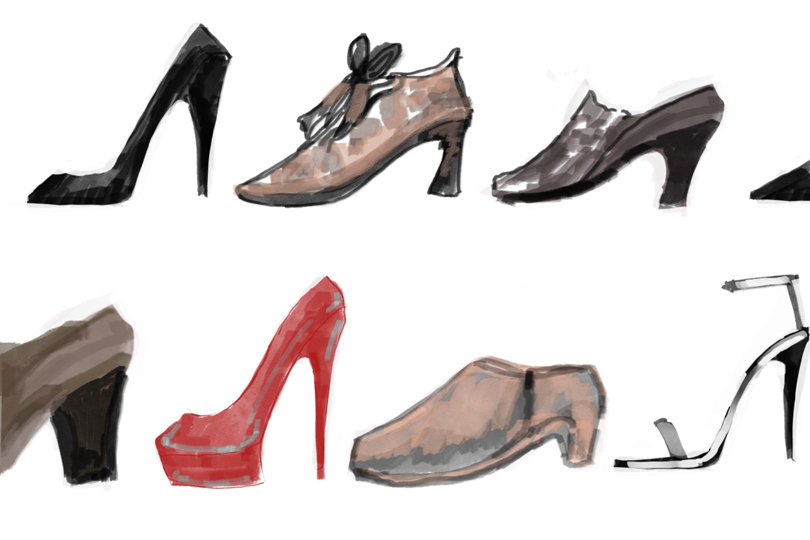Part of an ongoing series of 29Secrets stories, taking a deep dive into the history of legendary beauty products and iconic fashion and pop culture moments…
By Christopher Turner
Illustration by Michael Hak
In an age when stilettos and towering platform shoes are often considered a symbol of femininity as well as female sexuality and allure, it might come as a surprise to learn that high heels were originally created for men. The origin of high heels can be traced all the way back to butchers in ancient Egypt – and male soldiers, aristocrats and royals in differing parts of the globe would be the most prominent wearers of heeled shoes until the end of the 17th century, when women began to adopt the shoe into their fashions. By the 1800s, women of all social classes wore heels, completing the shoe’s journey from practical utility to a feminine fashion statement.
Through the years women’s heels have persisted, which is strange considering how uncomfortable some of them can be. Still, heels have remained a constant in the world of women’s fashion, and today they are often considered a staple in the world of fashion. They are more than just a footwear choice – they can symbolize a complex blend of style, power and femininity…not to mention their impact in popular culture, which is undeniable.
The history of high heels is long and diverse. Read on for a mini history lesson on the surprising history of heeled shoes, including their origin, evolution and cultural significance.
Origins of high heels: For men only
It is not known when exactly high heels made their first appearance. History records show murals from 3500 BCE depicting the higher class wearing early versions of heeled shoes. The shoes, made from flexible leather pieces held together with lacing, were designed to resemble the symbol “Ankh” – the ancient Egyptian hieroglyph which represents the concept of life.
We know that platformed footwear has a long history dating as far back as ancient Egypt and Greece, where they had a specific utilitarian purpose. At that time, Egyptian butchers wore high-heeled shoes for a practical reason: to walk above the blood of the slaughtered animals on the floor, keeping the butchers’ feet clean and helping to prevent slips. In time, Egyptian nobility would adopt the style and use similarly sized heels to appear taller. Some historians believe their ancient iterations of heels were worn for ritual ceremonies, the height of the heel bringing the practitioners closer to the gods.
Centuries later, the Persian cavalry of the 10th century were still using high-heeled shoes for functionality, wearing a type of galesh, a kind of boot with a heel to help secure their feet in stirrups when riding horses. Heeled shoes also ensured the safety of Persian arrow-shooting riders when they stood up on galloping horses. Interestingly, this practical use of the heel set the standard for most horseback riding shoes throughout history and into the present day.
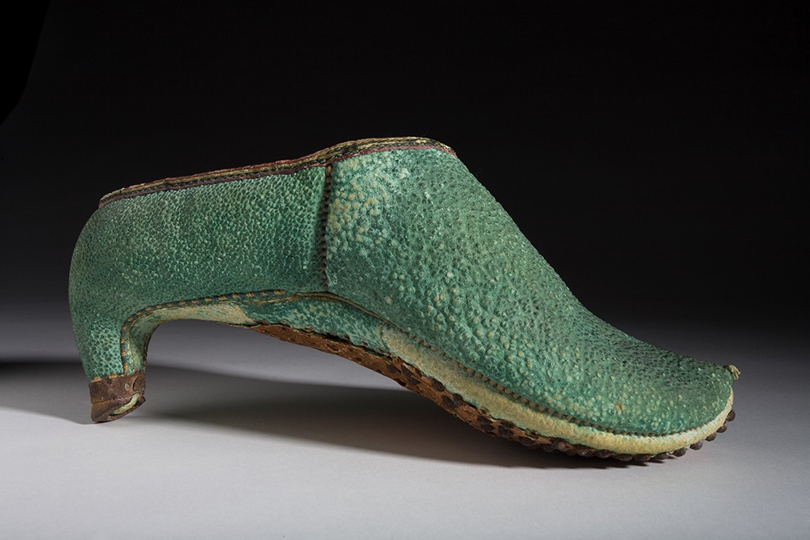
“The heel was an additional tool allowing the rider to steady himself, thus using weaponry better and transforming warfare,” according to Elizabeth Semmelhack, senior curator of the Bata Shoe Museum in Toronto.
Elsewhere, ancient Roman and Greeks (both men and women) wore platform sandals called Kothorni or buskins, but unlike Egyptian butchers or Persian horse riders, these high heels were worn to separate the social classes.
Of course, there are other examples of early heels. For example, in the 11th century, after the Great Schism that ultimately divided Eastern and Western Christianity, the pope notably began wearing red-heeled shoes. In 12th century India, a statue from the Ramappa Temple depicts an Indian woman’s foot clad in a raised shoe. From the late 15th to the early 17th centuries, during the medieval period in Europe, both men and women wore wooden pattens under or around their shoes to raise themselves out of the dirty and excrement-filled streets. The pedestal-like chopine, which were especially popular in Venice, were so exceptionally high – sometimes up to 21 inches! – that Venetian law later limited the height to three inches, although this regulation was widely ignored.
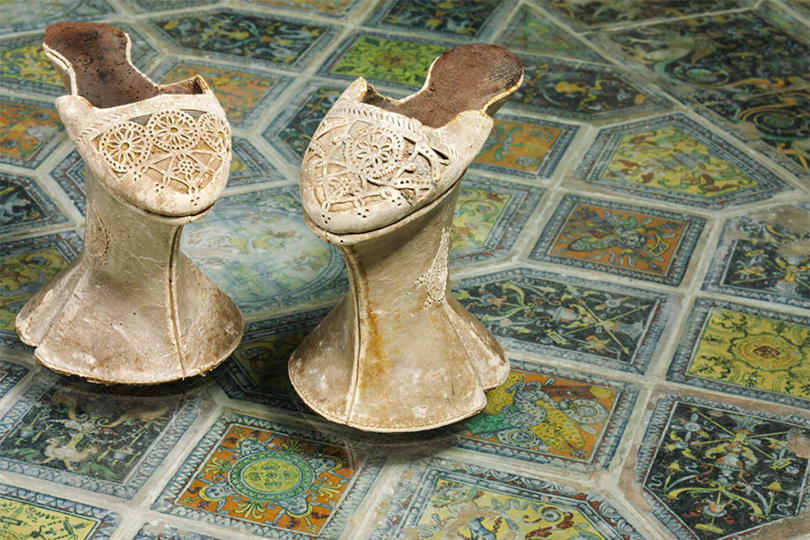
In Asia, in the early years of the Manchu Qing dynasty (1644–1911), the last of the imperial dynasties of China, most wealthy Han women had bound feet with lotus shoes, but some women wore platform shoes that, like many chopine, were elevated at the centre of the sole rather than at the heels.
17th and 18th centuries: Transition to women’s fashion
As trade and cultural exchange routes expanded through Europe at the turn of the 17th century, so did the prominence of heeled footwear, thanks to Persian emissaries of Abbas the Great. But these shoes were no longer seen as simply practical; many male aristocrats adopted heels as a sign of status and extreme wealth, and wore them to appear taller and more formidable.
They were often referred to as “Louis heels,” after King Louis XIV of France (1638–1715), also known as Louis the Great, who became the most famous proponent of high heels among men. At just five foot four, he first introduced heeled shoes to the French court in 1673 to make himself appear taller, and therefore more powerful and domineering. Interestingly, portraits of the longest-reigning monarch in history show that his elaborate leather heels were always dyed red, a trend that beats out Christian Louboutin’s trademark red-lacquered heels by more than 300 years. At the time, red was an incredibly expensive pigment, and Louis XIV used the colour to emphasize his superior social status and his royal authority.
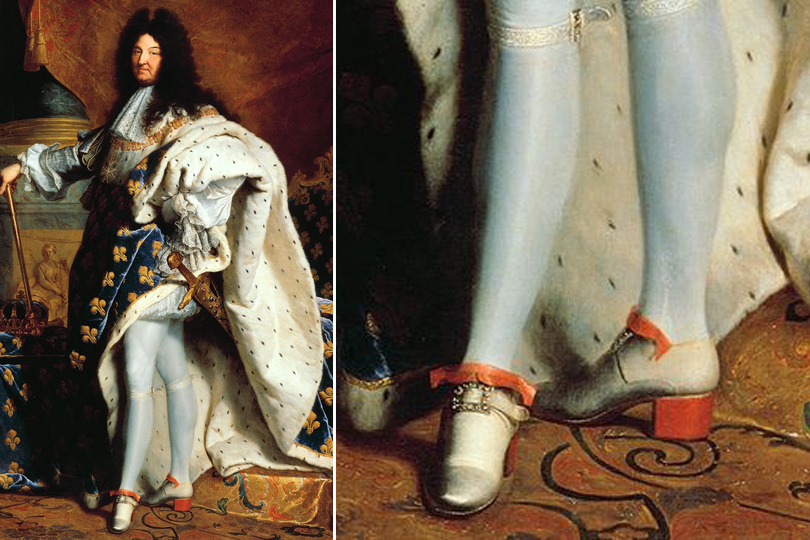
Louis XIV initially restricted the wearing of high heels to his circle of French nobles, but it didn’t take long for the style to be adopted by royalty across Europe. As the shoes became a fashion trend amongst Europe’s royal houses, other elite members of society began donning high heels as well, with some demanding that their heels be made even higher to distinguish themselves from the lower classes, who were beginning to adopt the style. It’s around this time that some authorities throughout Europe began regulating the length of a high heel’s point depending on social rank, according to Klaus Carl in his 2011 book Shoes: “1⁄2 inch for commoners, 1 inch for the bourgeois, one and 1⁄2 inches for knights, 2 inches for nobles, and two and 1⁄2 inches for princes.”
In the mid to late 17th century, more women across Europe began to wear heeled shoes, and the perception of heels slowly began to shift as the Age of Enlightenment began to usher in new ideals of rationality and practicality throughout Europe. This era was an intellectual and philosophical movement that also contributed to a change in women’s fashion and societal trends. There needed to be more to distinguish men’s heels from women’s heels, and so the heels worn by men of various social strata slowly became associated with more rugged forms of masculinity like practical riding boots or tall leather boots.
While men were slowly turning away from heeled shoes, wealthy women began wearing them to achieve some of their social benefits. However, women’s shoes had taller, thinner heels than those of their male counterparts, an effort to distinguish between the sexes. According to Valerie Steele from The Museum at the Fashion Institute of Technology in New York City, this could also be because people thought that taller, thinner heels made women’s feet and bodies look more feminine. The heels changed a woman’s silhouette, which some men found alluring, so they became associated with women’s sexuality. “Women’s bodies have always been sexualized, and heels began to be associated with female eroticism,” Steele says. “This is when men abandoned the heel for more practical flat boots, but women continued to wear them.”
That trend continued through the 18th century; in fact, by 1740, men typically were not seen wearing heeled shoes at all. And, by the late 1780s, the societal implications of heels became fixed: high, thin heels represented femininity and the supposed superficiality and extravagance of women.
“As beauty ideals shifted, one of the principles that emerged was that beautiful women had very tiny feet,” Semmelhack explains. “[The high heel] hid the majority of a woman’s foot under her skirt, so she could just present the tiny part of the shoe, the toes, from under the skirt.
“People say all the time that women wear heels because it elongates their legs or makes them taller or thinner, but that use of the high heel is very recent,” Semmelhack continues. “Early on, it had nothing to do with lengthening the leg, because legs were hidden under skirts, so no one cared! It was about presenting a small foot.”
19th century: Start of high heels as we know them today
By the end of the 1700s, women of all social classes were wearing heels, with an average height of about two and a half inches. Steele says it’s a myth that heels and corsets were worn only by women of the upper classes: by the end of the 18th century, even poor women or women working in fields or as housemaids felt pressure to wear heels to show that they were women, too.
At this point in history, the trend of men wearing heels was over – and by the time Napoleon crowned himself emperor of France in 1804, the new ruler actually made a point of wearing flats. Women weren’t exempt from the sartorial changes that were spreading as the 19th century kicked off. Perhaps spurred by revolutions in America and France and the rejection of royalty, the heel on women’s footwear became lower and lower until it disappeared altogether and flats became the footwear option of choice.
The flat’s popularity was short-lived, however. By 1850, women’s heels were ushered back into society, to an average 1/2 inch in 1851 and an average 2 1/2 inches by 1860. It didn’t stop there: brass heel pieces began to appear in the latter half of the 19th century, which supported an even higher heel on shoes.
High heels found increased popularity during the latter part of the Industrial Revolution when Surinamese-American inventor Jan Ernst Matzeliger (1852–1889) designed the first footwear sewing machine. Matzeliger revolutionized the industry of shoemaking with his machine, dramatically cutting the cost of manufacturing shoes, and thereby making them much more affordable. The mass production of shoes in the late 1800s meant that hundreds of high heels could now be made in a single day, which ultimately helped them become more widely available. The use of machines and assembly lines also paved the way for new materials and significant changes in styles. This period marked the beginning of high heels as we know them today.
The Industrial Revolution forever changed high heels, and ensured that the shoe would remain a constant presence in women’s life through every imaginable milestone. Since then, high heels for women have walked in and out of fashion with a never-ending cycle of new styles, colours, fabrics and heights.
20th century: The stiletto
In the early 20th century, high heels became entwined with women’s rights movements. And, considerably less controversially, by the Golden Age of Hollywood, screen sirens were always seen in glamorous heels, further popularizing them.
But high heels weren’t always top of mind. World War I and World War II led many countries to ration materials that had previously been used to make shoes, prioritizing materials such as silk, rubber and leather for military use. However, after World War II ended, high heels made a significant comeback, with high-profile fashion labels like Christian Dior and Salvatore Ferragamo leading the way in innovative designs and styles.
Marilyn Monroe once said: “I do not know who invented the stiletto, but I can tell you that women owe him a lot.”
The invention of the stiletto (an Italian word for a small metal dagger) is attributed to French fashion designer Roger Vivier, who designed shoes for the fashion house of Christian Dior from 1953 to 1963. Vivier had previously made a name for himself when he designed the first modern platform shoe in 1937, but he would forever change the course of fashion in 1954 when he inserted a metal rod in the wood of a heel he was designing, ultimately making the shoe lighter, more resistant and higher than ever before. “The needle,” as Vivier called his strong slender heel, measured eight centimetres high (around three inches). “They finish the silhouette with a stroke of a pencil,” Vivier said of his creation.
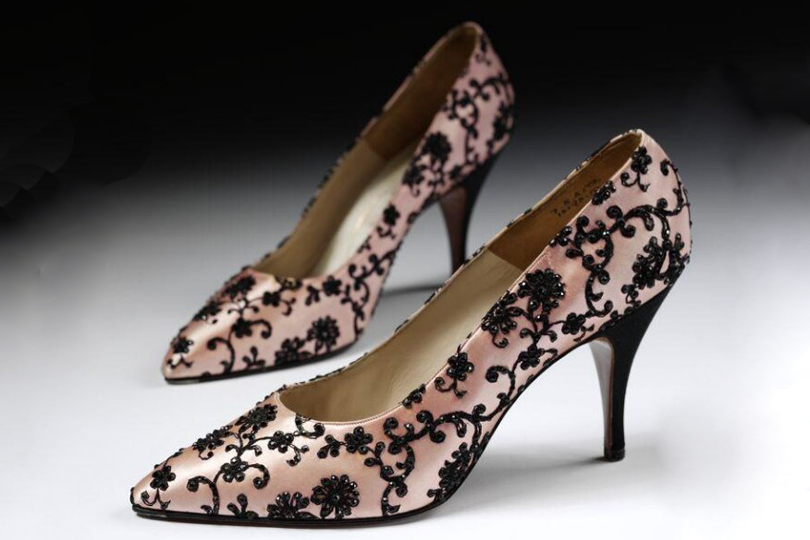
The new style quickly spread across Europe and the United States, changing the fashion landscape forever. It immediately offered new heights to women, and contributed to the narrative that the feminine stiletto would make them both remarkable and irresistible. How could it not? Stilettos were designed to give the optical illusion of a longer, slimmer leg, a smaller foot and overall greater height, altering the wearer’s posture, flexing the calf muscles and making the bust and buttocks more prominent, further pushing the narrative that heels were tied to female sexuality.
Today: A key element in both fashion and everyday wear
By the 19th and 20th centuries, the association between high heels and femininity and sexuality had become firmly entrenched. High heels were now an integral part of women’s fashion, symbolizing glamour, sophistication and sensuality. At the same time, they also became a symbol of both empowerment and oppression, continuously scrutinized, criticized and idolized.
In the 21st century, high heels have embraced diversity in design and cultural influences and are a key element in high fashion and everyday wear, reflecting an array of personal styles and identities. High heels have had countless iconic moments in various spheres of popular culture, often associated with your favourite celebrity, TV show, movie or fashion designer – not to mention the countless websites, magazines, coffee table books and museum exhibitions devoted to them. And still they are seen as both a symbol of both empowerment and oppression, depending on who you ask. Some things never change.
![]()
Want more? You can read other stories from our The Story Of series right here.

